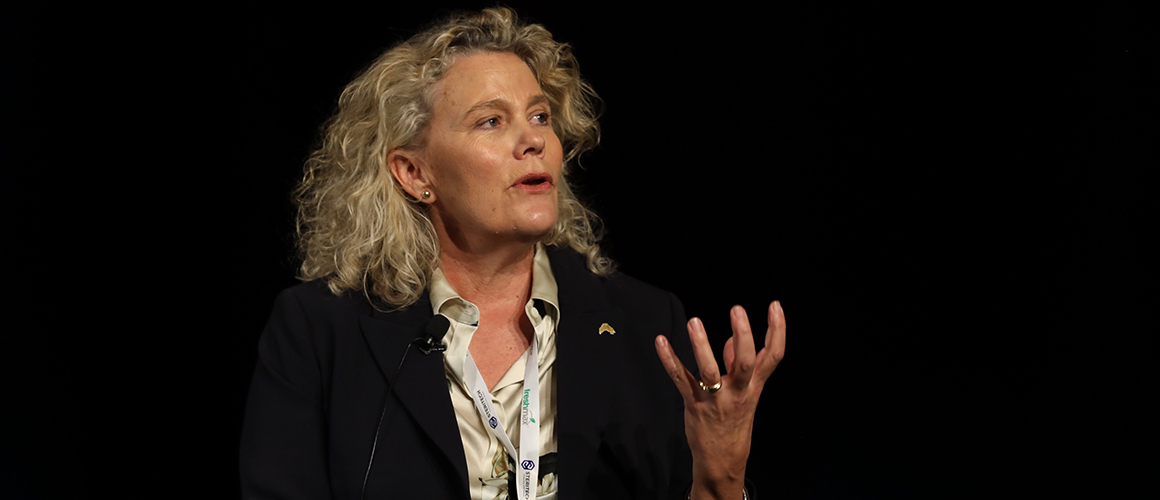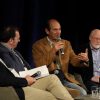Hort Connections Plenary Sessions prepare delegates for the future of horticulture
This year’s Hort Connections Plenary Sessions have given delegates an eye-opening look at the near future of horticulture, with local and international experts breaking down the new technology, consumer trends and global changes that are going to shape our industry in the years to come.
Futurist Chris Riddell opened the session, breaking down what Australian businesses can expect beyond tomorrow in a world that is increasingly disrupted by technology and new ways of delivering information. While the world is still grappling with the massive impacts of social media, mobile technology, cloud computing, and new forms of data analytics, Chris told delegates that future-ready businesses need to understand the next global trends: the sharing economy, blockchain technology, artificial intelligence, and the Internet of Things.
As these and new trends continue to disrupt established systems, the world needs to develop new forms of trust and information-sharing, and even sectors with low levels of digitisation like horticulture are in a position to take advantage of rapid developments in technology.
Following on from this look at the near future, two leading voices in the industry spoke about the present:
- James Whiteside, AUSVEG CEO, shared his views on the fragmentation of horticulture sector, and the impact that our diversity of commodities and groups has on our industry’s ability to support effective advocacy in national discussions. With the recent formation of the National Farmers’ Federation Horticulture Council and other collaborative efforts, James said that horticulture is in a valuable position to turn its strong economic standing into more efficient industry development.
- Darren Keating, PMA A-NZ CEO, spoke about the incredible possibilities of fresh produce and the work that goes into developing new products which create value and engage consumers. Darren also discussed the strong challenges facing our sector, including the ongoing battle to maintain trust and communicate clearly in a more transparent world, with a focus on authenticity and meeting evolving consumer preferences about traceability and provenance.
James and Darren were also joined by Dr Jimmy Botella, from the University of Queensland, and Julian Cribb, author and science communicator, for the State of the Industry panel discussion.
Amongst a wealth of discussion about the near future of our sector, delegates heard that the world will need to completely change its food production systems to manage greater scarcity of resources, including shifting fifty per cent of food production off-farm and into cities. Concentrating food production into urban areas, such as with vertical farming and other space-efficient methods, will help cities of the future recycle resources and feed growing populations.
Image gallery: Plenary Sessions at Hort Connections 2018
We’ve collected photos of this year’s presenters in action, including the State of the Industry discussion panel, so take a look at our expert speakers.
The panel also discussed the multi-faceted challenge of increasing consumption, particularly in the context of Hort Connections’ theme of halving waste and doubling productivity by the year 2030. As consumers’ eating habits change and the global marketplace becomes increasingly competitive, panel members gave delegates their expert insights into how the Australian industry will need to change how it thinks about consumers – or, as Julian told the audience: “Stop talking about agriculture and horticulture and start talking about food. Food is what consumers eat. They don’t eat agriculture and horticulture – they eat food.”
Delegates also heard from Drew Yancey, an innovation strategist who shared insights with the audience about the seismic shifts being caused by disruption and innovation in businesses around the world. In Drew’s words, he came to the stage with one goal: “To make you excitedly uncomfortable about these shifts.”
Changes in our industry are being driven in a range of areas, from changes to product development and delivery to the increasing competitiveness of the market place. With technology increasing the speed and effects of disruptions, Drew highlighted that these changes are all contributing to one core result: heightening consumer demands, with buyers wanting increased availability, affordability and variety all at the same time.
To meet these challenges, businesses need to find new ways of thinking and have new ideas about product delivery – and, as Drew puts it: “If you discover an idea is bad, you want to do that as quickly and as cheaply as possible.” To help growers, Drew broke down the processes and structures that growers can use to innovate in their own business, from business structures that encourage innovation to actually executing breakthrough ideas to see if they work.
Finally, National Farmers Federation (NFF) President Fiona Simson spoke to delegates about her vision of Australia in 2030 and horticulture’s role in the national agriculture agenda. As well as talking about the role of the NFF in the modern Australian political world, Fiona highlighted the need for a united voice – not only in horticulture but across all of agriculture – to speak for growers and farmers, help them meet their goals, and support agriculture in becoming a $100 billion industry.
A key takeaway from Fiona’s time on stage can be summarised in a simple statement: “Advocacy, we think, is changing. And so are we.” The crowd heard that the NFF is targeting more agile and responsive forms of advocacy that have adapted to the modern world’s faster information flow – as Fiona’s supporting presentation noted, “The internet has made it possible for niche anti-farming groups to wield disproportionate influence. We’re responding by building an audience of supporters beyond the farm gate.”
If you couldn’t make it to the plenary sessions, we’ll be uploading videos to our YouTube channel later on, and we’ll be sure to let you know when they’re up. Right now, however, you can take a look at the photo gallery above to see the speakers in action!
This post appeared in the AUSVEG Weekly Update published 21 June 2018. Subscribe to the Update using our online form to receive the latest industry news in your inbox every week!











